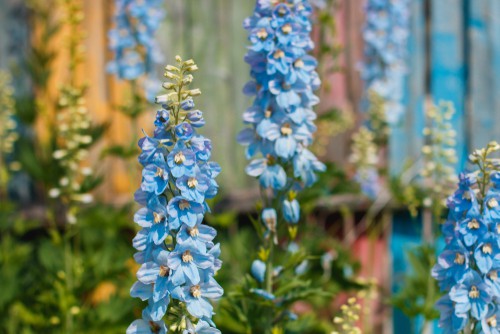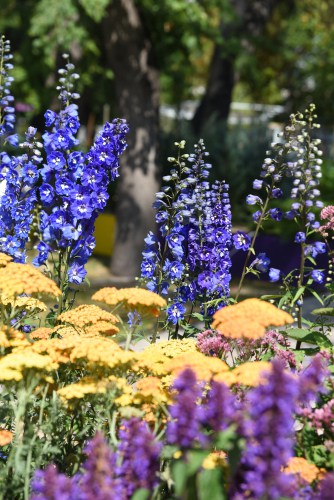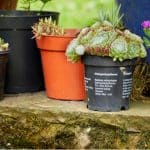Last updated on March 29th, 2022
Our site is reader supported, this means we may earn a small commission from Amazon and other affiliates when you buy through links on our site.
Delphiniums are a wonderful addition to any garden, standing out like blazing fireworks with their vigorous climbing flowers and colour. They make a wonderful contribution to any garden without feeling too dense.
But how can you grow, plant, and care for them?
Planting and growing a stunning display of Delphiniums
Well, it starts with good soil. Delphiniums need well-draining soil and they also need a lot of food. This means you should add things like grit to help with the soil drainage. Remember that UK gardens are at particular risk for problems in the winter and if Delphiniums are waterlogged while dormant in the winter, they will most likely die. You need to help circumvent such a disastrous end, so with this in mind, the first job is to add plenty of grit into the soil.
Learn how to grow Delphiniums in pots

Feeding Delphiniums
And back to the food. As mentioned, they need a lot of food so, when you first plant them, add organic matter such as homemade compost, farm manure, or good quality compost into the soil and planting holes before putting in the Delphiniums.
After that, give them regular slow-release fertiliser throughout their growing season or feed with a liquid feed when feeding your other plants. You can add things like fish, blood and bone a few times in the summer while the plant is growing and then once more in the autumn right before the plant goes into dormancy.
Caring for Delphiniums
Dealing with pests on Delphiniums
Caring for the plants extends to their health and beyond food and soil, Delphiniums are susceptible to diseases, with mildew being a common problem as well aphids like greenflies. One particularly pesky pest that will do a good amount of damage is slugs. Slugs can get everywhere. You can do a few things to prevent them beyond laying slug pellets which we try to avoid because of local wildlife. One is a beer trap, where you literally put a container of beer to lure them away from your plant and you bury it ever so slightly so the slugs get trapped.
Another trick we have tried and seems to work well is to crush two garlic cloves and boil them with water for one hour, then strain the remaining liquid and dose your plants right at the start of their growing season, around March and April.

Treating powdery mildew
Another potential issue is powdery mildew, especially in dry seasons. Certain varieties are more prone than others, like the Chelsea Star. To prevent this, make sure the plants are given enough space in between one another if you have more than one, and be sure to thin out the emerging shoots from the crown of the plant early so that enough airflow takes place.
Realistically, you can try to wash it away once it happens, dousing your plants with bicarbonate and water mixtures, but preventative measures are best. We recommend spraying with a fungicide at the first signs and removing any affected leaves quickly to try and prevent it from spreading.
Supporting Delphiniums to help prevent the tall flowers from flopping over
Beyond everything we have talked about above, remember that these plants need support because some varieties can get as tall as 5-6ft. Staking with bamboo canes or plant supports is, therefore, vital to their survival from strong winds or heavy rains. The stems on Delphiniums are hollow so they can get flattened easily which is one of the downsides of growing them.
You can make a cage with three bamboo canes, trussed using string for plants in a border. Of course, if you have a real problem with the aesthetics of the structure, you can always paint it and it will blend right in.
Propagating Delphiniums
Propagating Delphiniums, like lots of perennials, is best done by taking a basal cutting. See our guide on taking cuttings from Delphiniums here
By following all of these steps, you can plant, care for, and maintain successful Delphiniums for years to come.


